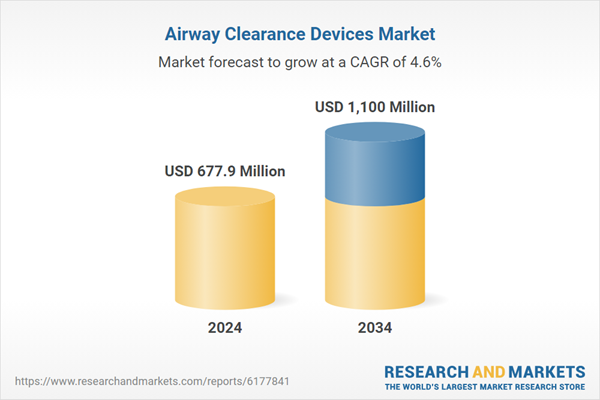The rising prevalence of respiratory illnesses, advancements in technology, an aging population, and greater awareness of airway therapy are all key contributors to this market’s growth. Healthcare providers, payers, and life sciences companies are increasingly adopting airway clearance solutions to improve outcomes, streamline care delivery, and enhance regulatory compliance. The introduction of high-frequency chest wall oscillation (HFCWO) vests, oscillatory positive expiratory pressure (OPEP) systems, and connected digital health solutions is reshaping how patients manage chronic pulmonary conditions. These innovations enable personalized therapy adjustments and remote monitoring, making care more efficient and patient-centric.
Patient education initiatives and awareness programs are helping boost early diagnosis and adherence to respiratory treatments. At the same time, rising global healthcare expenditure, supportive reimbursement frameworks, and public health initiatives for managing chronic lung diseases are encouraging higher adoption of airway clearance therapies across regions. With the push toward outpatient and home care models, the demand for compact, user-friendly, and non-invasive respiratory devices is expected to rise consistently over the forecast period.
In 2024, the flutter mucus clearance device segment reached USD 152 million and is forecast to grow at a CAGR of 5.3% through 2034. These devices are becoming increasingly popular due to their compact design, ease of use, and cost-efficiency. They are particularly well-suited for individuals with less severe respiratory issues and are often preferred for self-administered care. Their affordability also makes them accessible in low-resource settings and across a wide range of healthcare systems. As the focus shifts toward prevention and remote care, these devices offer a convenient option for maintaining respiratory health in non-hospital environments.
The chronic obstructive pulmonary disease (COPD) segment held a 42% share and is expected to reach USD 439.3 million by 2034. COPD remains one of the most widespread respiratory conditions globally, with environmental and lifestyle factors such as pollution, smoking, and occupational hazards driving its prevalence. Patients with COPD frequently suffer from mucus build-up and obstructed airways, creating a strong need for effective airway clearance to improve breathing, reduce hospitalizations, and enhance daily function.
North America Airway Clearance Devices Market held a 38.7% share in 2024. The region benefits from well-established healthcare infrastructure, high adoption of durable medical equipment, and favorable regulatory frameworks. There's growing use of oscillatory and air-pulse devices in residential settings, driven by initiatives aimed at promoting independent care and improving quality of life. The region’s focus on personalized treatment and integration of advanced technologies into home care is accelerating the uptake of airway clearance solutions.
Key players shaping the Global Airway Clearance Devices Market include ICU Medical, Monaghan Medical Corporation, VYAIRE MEDICAL, Baxter, Dymedso, ABM Respiratory Care, Mercury Medical, Pari Medical, Thayer Medical, Sentec, Dima Italia, Electromed, Tactile Medical, Philips, Pneumo Care Health, and VORTRAN Medical Technology. Leading companies in the airway clearance devices market are pursuing product innovation, digital integration, and strategic collaborations to reinforce their market presence. By incorporating smart connectivity, remote monitoring, and personalized therapy features, they’re making devices more intuitive and responsive to patient needs. Firms are also expanding their distribution networks globally and entering new geographic markets to tap into unmet demand. Several players are investing in clinical research to validate device efficacy and meet evolving regulatory standards. Mergers and partnerships with respiratory care providers, hospitals, and telehealth platforms allow for greater adoption in both inpatient and home care environments.
Comprehensive Market Analysis and Forecast
- Industry trends, key growth drivers, challenges, future opportunities, and regulatory landscape
- Competitive landscape with Porter’s Five Forces and PESTEL analysis
- Market size, segmentation, and regional forecasts
- In-depth company profiles, business strategies, financial insights, and SWOT analysis
This product will be delivered within 2-4 business days.
Table of Contents
Companies Mentioned
The companies profiled in this Airway Clearance Devices market report include:- ABM Respiratory Care
- Baxter
- Dima Italia
- Dymedso
- Electromed
- ICU Medical
- Philips
- Mercury Medical
- Monaghan Medical Corporation
- Pari Medical
- Pneumo Care Health
- Sentec
- Tactile Medical
- Thayer Medical
- VORTRAN Medical Technology
- VYAIRE MEDICAL
Table Information
| Report Attribute | Details |
|---|---|
| No. of Pages | 140 |
| Published | September 2025 |
| Forecast Period | 2024 - 2034 |
| Estimated Market Value ( USD | $ 677.9 Million |
| Forecasted Market Value ( USD | $ 1100 Million |
| Compound Annual Growth Rate | 4.6% |
| Regions Covered | Global |
| No. of Companies Mentioned | 17 |









